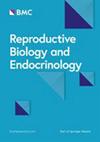使用劣质胚胎和优质胚胎进行冷冻解冻胚胎移植对妊娠和新生儿结局的影响
IF 4.2
2区 医学
Q1 ENDOCRINOLOGY & METABOLISM
引用次数: 0
摘要
目的:评估胚胎质量和数量,特别是通过双胚胎移植(DET)将劣质胚胎(PQE)与优质胚胎(GQE)相结合对冷冻解冻胚胎移植(FET)周期患者的活产率(LBR)和新生儿预后的影响。在2018年1月至2021年12月期间,研究人员对接受自体卵母细胞冷冻解冻卵裂或囊胚胚胎移植周期的1462名女性进行了研究。为了比较使用GQE的单胚胎移植(SET)与使用GQE和PQE的DET之间的结果,采用了倾向得分匹配(PSM)来控制潜在的混杂因素,并使用广义估计方程(GEE)模型来确定额外PQE的影响与结果之间的关联。此外,还对按女性年龄分层的患者进行了分组分析。经过 PS 匹配后,在裂隙期胚胎移植中,与 SET-GQE 相比,DET-GQE + PQE 并未显著改变 LBR(调整赔率比 [OR] 1.421,95% CI 0.907-2.228),但确实增加了多胎率(MBR,[OR] 3.917,95% CI 1.189-12.911)。然而,在进行囊胚期胚胎移植的患者中,增加第二个 PQE 会使活产率增加 7.8%([OR] 1.477,95% CI 1.046-2.086),多胎率增加 19.6%([OR] 28.355,95% CI 3.926-204.790),并导致不良的新生儿结局。对于接受卵裂期胚胎移植的患者,在移植 PQE 的同时移植 GQE 会导致 35 岁以下女性的 MBR 显著增加([OR] 4.724,95% CI 1.121-19.913),但 LBR 并未增加([OR] 1.227,95% CI 0.719-2.092)。在 35 岁以上的女性中,DET-GQE + PQE 与 SET-GQE 相比,LBR 和 MBR 的增加并不显著。对于接受囊胚期胚胎移植的患者,DET-GQE + PQE 的 LBR([OR] 1.803,95% CI 1.165-2.789)、MBR([OR] 24.185,95% CI 3.285-178.062)和早产率(PBR,[OR] 4.与 SET-GQE 相比,在 35 岁以下的女性中,SET-GQE 对 LBR([OR] 1.053,95% CI 0.589-1.884)或 MBR(0% vs. 8.3%)没有显著影响,而在 35 岁以上的女性中,SET-GQE 对 LBR([OR] 1.053,95% CI 0.589-1.884)或 MBR(0% vs. 8.3%)没有显著影响。对于接受冷冻解冻卵裂期胚胎移植的患者来说,添加 PQE 对 LBR 没有明显的益处,但会显著增加 MBR。然而,对于进行囊胚期胚胎移植的患者,DET-GQE + PQE 会导致 LBR 和 MBR 增加,这可能会导致不良的新生儿结局。因此,应平衡双囊胚期胚胎移植的益处和风险。在 35 岁以下的患者中,无论是卵裂期胚胎移植还是囊胚期胚胎移植,SET-GQE 都能达到令人满意的 LBR,而 DET-GQE + PQE 则导致 MBR 显著增加。考虑到 35 岁以上女性接受单个卵裂期胚胎移植的 LBR 较低,选择性单个囊胚期胚胎移植似乎是一种更有希望降低多胎活产风险和新生儿不良预后的方法。本文章由计算机程序翻译,如有差异,请以英文原文为准。
Effect of frozen-thawed embryo transfer with a poor-quality embryo and a good-quality embryo on pregnancy and neonatal outcomes
To evaluate the impact of embryo quality and quantity, specifically a poor quality embryo (PQE) in combination with a good quality embryo (GQE), by double embryo transfer (DET) on the live birth rate (LBR) and neonatal outcomes in patients undergoing frozen-thawed embryo transfer (FET) cycles. A study on a cohort of women who underwent a total of 1462 frozen-thawed cleavage or blastocyst embryo transfer cycles with autologous oocytes was conducted between January 2018 and December 2021. To compare the outcomes between single embryo transfer (SET) with a GQE and DET with a GQE and a PQE, propensity score matching (PSM) was applied to control for potential confounders, and a generalized estimating equation (GEE) model was used to determine the association between the effect of an additional PQE and the outcomes. Subgroup analysis was also performed for patients stratified by female age. After PS matching, DET-GQE + PQE did not significantly alter the LBR (adjusted odds ratio [OR] 1.421, 95% CI 0.907–2.228) compared with SET-GQE in cleavage-stage embryo transfer but did increase the multiple birth rate (MBR, [OR] 3.917, 95% CI 1.189–12.911). However, in patients who underwent blastocyst-stage embryo transfer, adding a second PQE increased the live birth rate by 7.8% ([OR] 1.477, 95% CI 1.046–2.086) and the multiple birth rate by 19.6% ([OR] 28.355, 95% CI 3.926–204.790), and resulted in adverse neonatal outcomes. For patients who underwent cleavage-stage embryo transfer, transferring a PQE with a GQE led to a significant increase in the MBR ([OR] 4.724, 95% CI 1.121–19.913) in women under 35 years old but not in the LBR ([OR] 1.227, 95% CI 0.719–2.092). The increases in LBR and MBR for DET-GQE + PQE compared with SET-GQE in women older than 35 years were nonsignificant toward. For patients who underwent blastocyst-stage embryo transfer, DET-GQE + PQE had a greater LBR ([OR] 1.803, 95% CI 1.165–2.789), MBR ([OR] 24.185, 95% CI 3.285–178.062) and preterm birth rate (PBR, [OR] 4.092, 95% CI 1.153–14.518) than did SET-GQE in women under 35 years old, while no significant impact on the LBR ([OR] 1.053, 95% CI 0.589–1.884) or MBR (0% vs. 8.3%) was observed in women older than 35 years. The addition of a PQE has no significant benefit on the LBR but significantly increases the MBR in patients who underwent frozen-thawed cleavage-stage embryo transfer. However, for patients who underwent blastocyst-stage embryo transfer, DET-GQE + PQE resulted in an increase in both the LBR and MBR, which may lead to adverse neonatal outcomes. Thus, the benefits and risks of double blastocyst-stage embryo transfer should be balanced. In patients younger than 35 years, SET-GQE achieved satisfactory LBR either in cleavage-stage embryo transfer or blastocyst-stage embryo transfer, while DET-GQE + PQE resulted in a dramatically increased MBR. Considering the low LBR in women older than 35 years who underwent single cleavage-stage embryo transfer, selective single blastocyst-stage embryo transfer appears to be a more promising approach for reducing the risk of multiple live births and adverse neonatal outcomes.
求助全文
通过发布文献求助,成功后即可免费获取论文全文。
去求助
来源期刊

Reproductive Biology and Endocrinology
医学-内分泌学与代谢
CiteScore
7.90
自引率
2.30%
发文量
161
审稿时长
4-8 weeks
期刊介绍:
Reproductive Biology and Endocrinology publishes and disseminates high-quality results from excellent research in the reproductive sciences.
The journal publishes on topics covering gametogenesis, fertilization, early embryonic development, embryo-uterus interaction, reproductive development, pregnancy, uterine biology, endocrinology of reproduction, control of reproduction, reproductive immunology, neuroendocrinology, and veterinary and human reproductive medicine, including all vertebrate species.
 求助内容:
求助内容: 应助结果提醒方式:
应助结果提醒方式:


